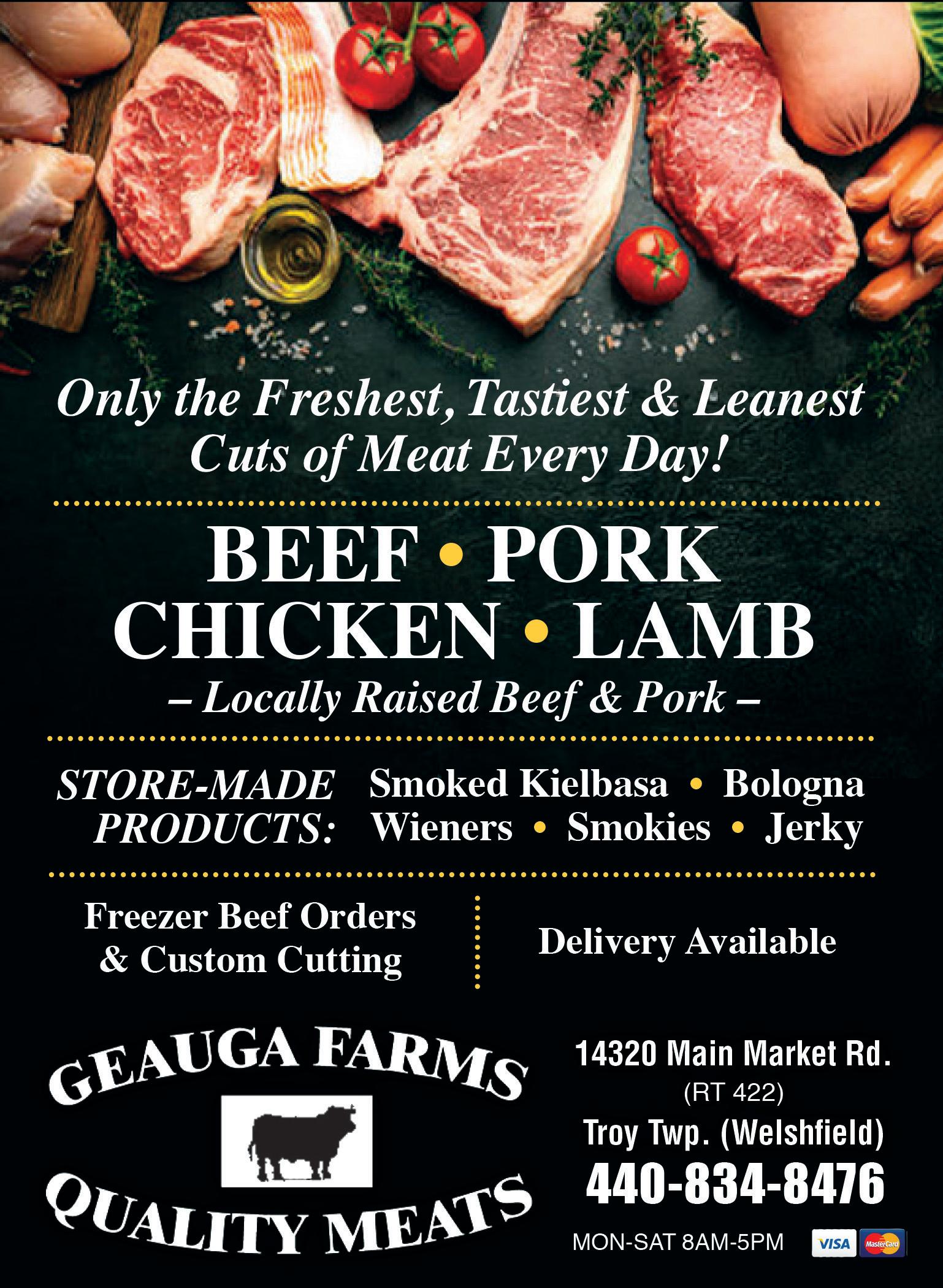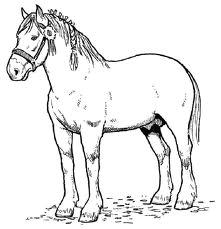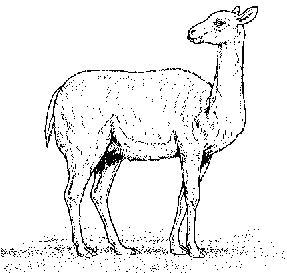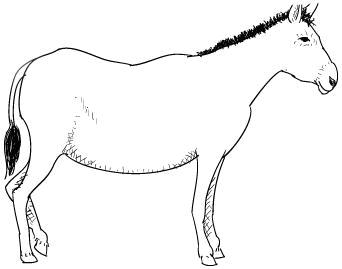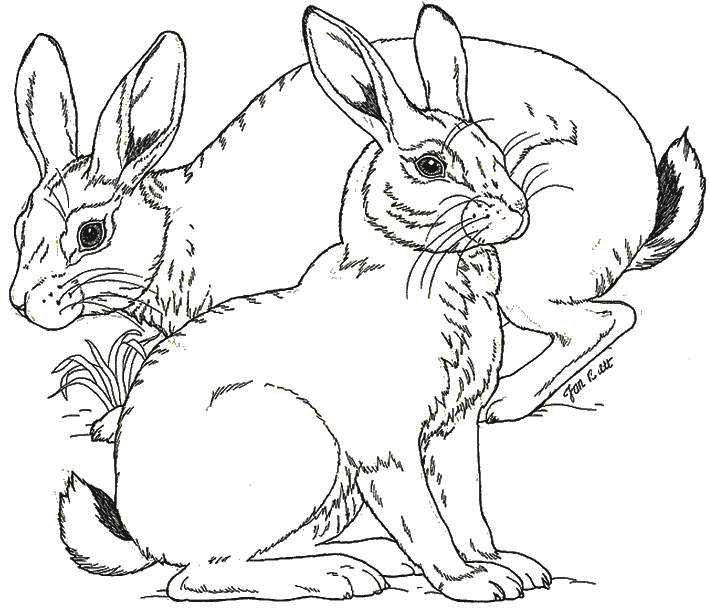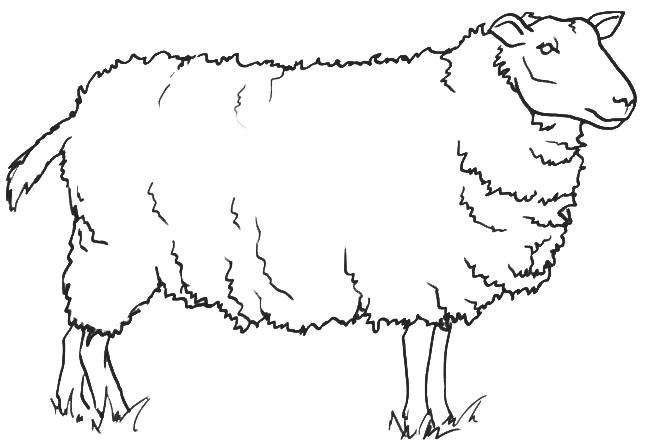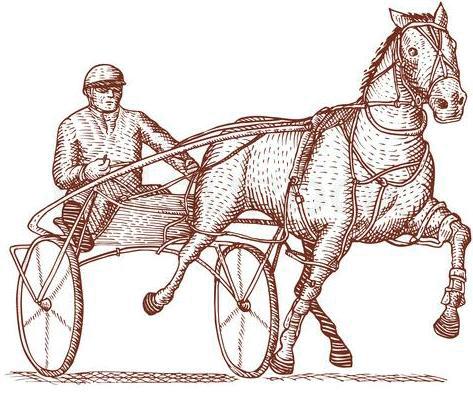




The “Great Granddaddy” of Ohio’s coun ty fairs is almost here, bringing a community celebration like no other.

Beginning Aug. 31, the Great Geauga County Fair will open its gates with “Fun Day, Fair Day,” offering $8 admission; while Sept. 1 will be “Senior Citizens and Veterans Day,’’ offering those ages 65 and older, as well as all veterans free admission. The last day of the fair, Sept. 4, is “Family Day,” when fair-goers can purchase all-day ride bands for $10.
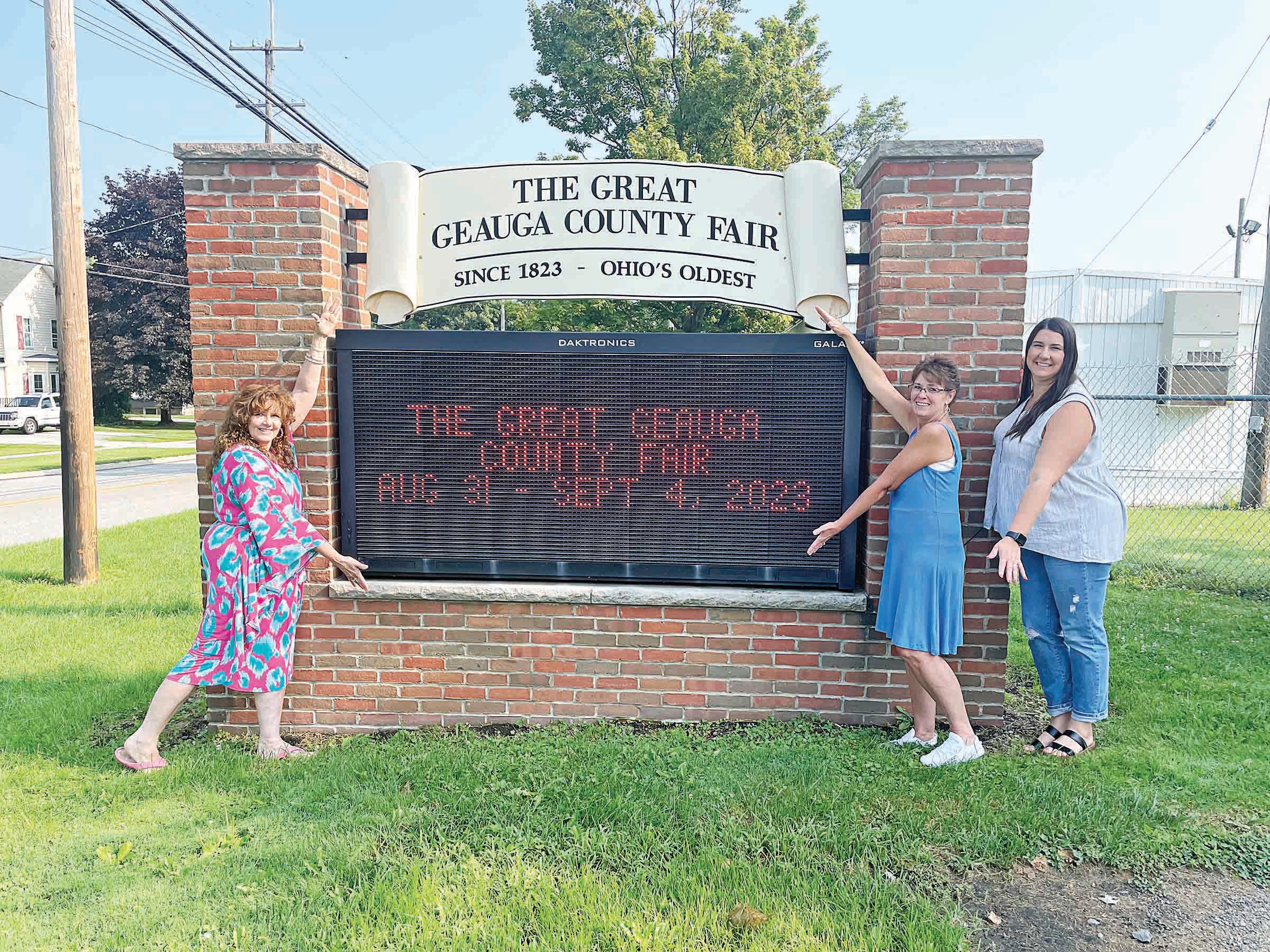
Going strong for its 201st year, the next chapter of the fair’s rich agricultural history is ready to turn a new page, and so are the dedicated individuals helping put together an event that is woven into the fabric of a county steeped in tradition.
“We thank all who came before us to lay the groundwork of successes that we cele brate and rejoice in,” said Paul Harris, long time Geauga County Fair Board secretary. “Every fair is special. We got through the bi centennial last year and are looking forward to the 201st fair. We will be back to just five days.”
The family fun gathering on 15 acres showcases about 3,000 farm animals with several miles of midways and an abundance of fair foods and games.
“As always, there will be 10,000 new ex hibits as they change every year,” Harris said.
“Many of these contests are simply great agricultural free family events that you don’t see on a daily basis. They are the thing that makes a county fair special, exciting and we are thrilled to have them here.”
Many of the fair events center around the county’s rich agricultural heritage, including its youth education, showcased in the junior fair program with two livestock sales — small animals Sept. 1 and large animals Sept. 2 — that support area youth.
Again, this year, the sale will be available online.

Harris said the natural resource area is a fair within a fair, and full of free activities that include youth fishing and demonstrations by
“Crash Um Up” Demolition Derby at 8 p.m. on Aug. 31 and 7 p.m. on Sept. 2 at the Main Grandstand.
The famous Sea Lion Splash Show is making a comeback to the fair with free daily acts on Midway Stage 1.
“They were a huge success a few years ago and will now be back,” Harris said.
Also new this year is the “SupaFun Band,” who also perform at the Ohio State Fair.
“Global Animal Partnership Certified,” with all cattle afforded extra space and care by providing outside areas to roam, he added.

sistent high quality because we control the whole process,” said Kurtz.
rettsville — and about a 20-minute drive from the Geauga County Fairgrounds in Burton — sits a farm born from the roots of a devoted family.
The idea for Bonner Farms Beef & Market at 12428 Ravenna Parkman Road (state Route 88) came about two years ago, when Richard (Dick) Bonner, of Mantua, decided to ensure sustainability of his family-farming operations far into the future by vertically integrating the farm with a processing facility and a retail market.
“We opened Bonner Farms Beef & Market to not only showcase our locally raised, premium quality beef, but to help promote other local farms and businesses whenever possible,” said BFBM President John Bonner, Dick’s son. “Bonner Farms Beef & Market is different and we are proud to bring accountability, healthiness and quality to families in Northeast Ohio.”
The look into the future was to create an
to create a place where other farmers in the region could bring their own animals to be processed on time, when they need it, with a high level of quality.
The Bonner family history is steeped in agricultural roots.
Dick was raised on the family farm on state Route 44 in Auburn Township, where parents Clifford and Kathryn bought a 50acre farm in 1946, John said.
One of 10 children, Dick grew up on the family farm, raising cows, pigs and hay, and farmed 600 acres of land rented from the City of Akron, he explained.
The Bonners’ Mantua farm was purchased in 1995. The original farm was about 550 acres. It expanded in 2020 to 3,000 acres in northern Portage and southern Geauga counties, and 400 acres of pasture in Tucker County, West Virginia, said John.
BFBM feeds about 1,500 cattle per year — most of which are “natural” cattle, receiving no hormones, steroids or antibiotics — and is
John also is CEO and co-founder of Burton-based Great Lakes Growers, a hydroponic grower of lettuce and herbs available at grocery stores throughout the Midwest.
He grew up on the family farm in Burton, among 30 acres of corn, soybeans and greenhouses. His grandfather started Burton Floral and Garden, the Midwest’s largest horticultural supply distributor.
“The beef we raise at Bonner Farms is different for three main reasons,” John said. “First, the genetics that we have produce animals that 60% of the time grade out as USDA Prime — the highest level attainable in the United States and represents superior marbling and flavor. “Second, the feed regimen the animals eat consists only of the crops raised on the farm’s own fields. We know what goes into these animals,” he continued.
“And finally, perhaps most importantly, we know what doesn’t go into these animals. Our Natural Premium Bonner Farms Beef contains no hormones or antibiotics … guaranteed.
“We control every step of the process, from hand selecting the healthiest cattle right down to how thick you want your steaks cut.”
Marvin Kurtz, BFBM head butcher, said he works with U.S. Department of Agriculture and Ohio Department of Agriculture meat inspectors every day to ensure production of safe and wholesome products for the community.
“We here at Bonner Farms pride ourselves in being a local beef supplier with con-
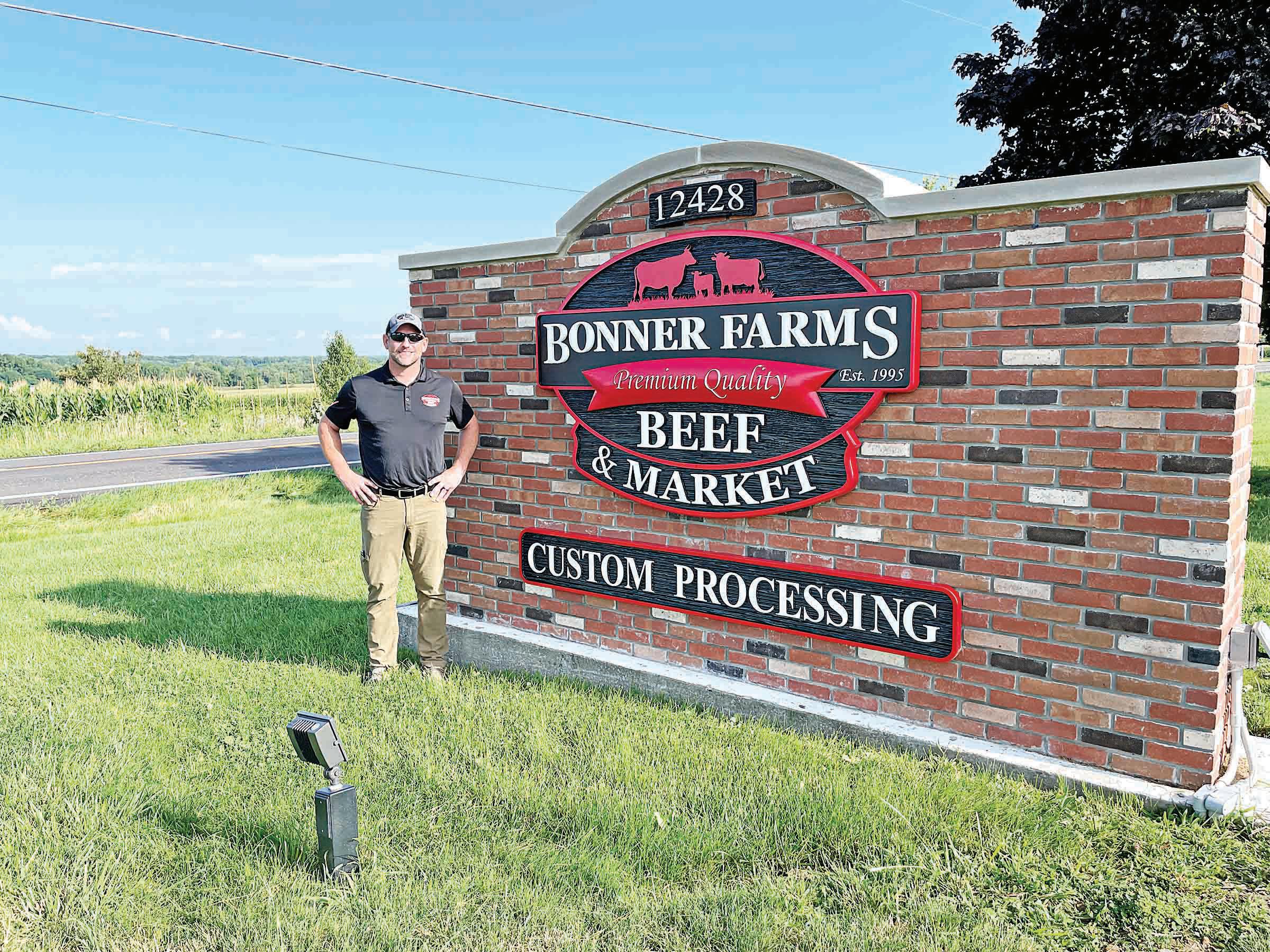

Their name, address and phone number are on the label.
“We take pride in how we raise and how we treat our animals, to provide you with healthy, clean, safe and delicious food,” John said.
The harvesting and processing operations are open for business and accepting new appointments, he said, adding if you are a local farmer and are interested in learning more about how you can partner with BFBM, contact the store and ask for him or give him a howdy at The Great Geauga County Fair.

“When you come to our market, you’ll find products including Bonner Farms Premium Quality Beef, locally-raised pork and chicken, local dairy products, jams and jellies, sauces, ketchups and mustards, bread and noodles, and more,” he added. “So, stop into our market, browse our shelves of locally-stocked items, shop our huge selection of beef, talk with our butchers about specific cuts you’re looking for and even place specials orders right from the counter.”
John said has been going to the fair every year since he was born.
“If you go back to my grandparents, John and Dorothy Gander, I can safely say we, as a family, have been attending this fair for over a century,” he said. “In fact, my house and some of our farmland is actually adjacent to the Geauga County Fairgrounds.”
His family walks to the fair every day.
“My daughters both participate in 4-H and Bonner Farms Beef is proud to be an approved processor for this year’s Geauga County Fair Livestock Auction,” John said. “This fair is a great tradition.”
Soinski Peterson are ready to greet and help customers in Garrettsville.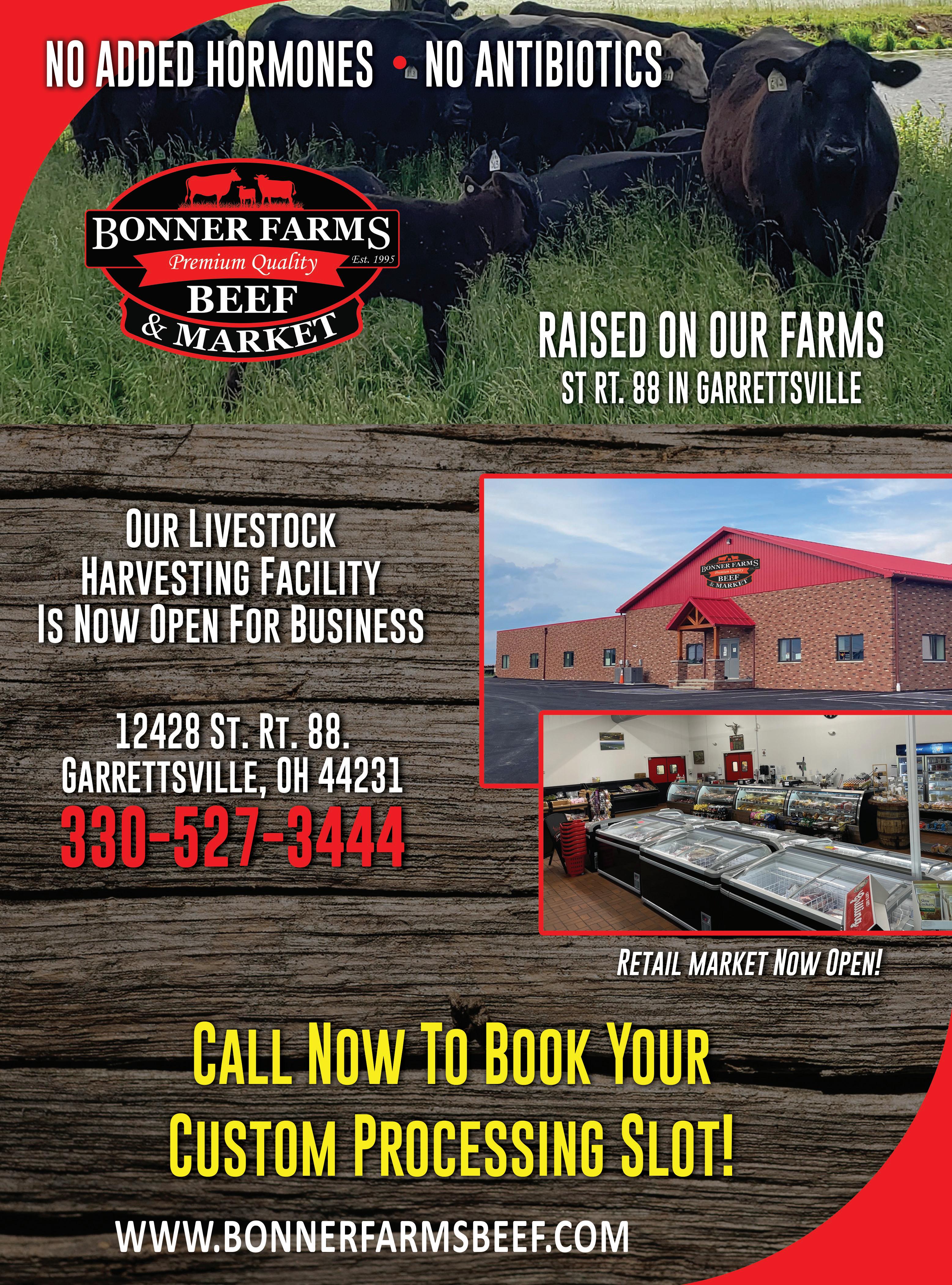
 By aNN WishaRt aNN@kaRlovecmedia com
By aNN WishaRt aNN@kaRlovecmedia com
Dannie Stoltzfus searches constantly for just the right edge.
The edge has to have character, be tight against the wood and made of bark.
Less than a year after he opened Creative Edge Tables in Burton Township, Stoltzfus said his furniture business draws more people than ever to his showroom.
His inventory has grown as well, with kitchen tables of all sizes adding choices for customers.

Live or living edge furniture has gained popularity and making tables, chairs and benches has been a promising offshoot of Stoltzfus’s main career.
He has spent much of his adult life in the woods operating a portable sawmill, turning out thousands of board feet a year in all kinds of weather.
Now a grandfather, he is taking his talents and knowledge of wood indoors and into a new chapter — making and selling live edge furniture out of his workshop on Patch Road in Burton Township.
The idea for Creative Edge Tables was born from Stoltzfus’ observation of the slabs he cut off the sides of logs — slabs of oak, maple and other trees being lumbered off.
“You find very unique trees in the woods,” he said in his showroom.
Slab wood is often sold in bundles and burned, but some of the thicker, wider pieces with interesting knots in them and with the bark firmly attached looked promising to Stoltzfus.
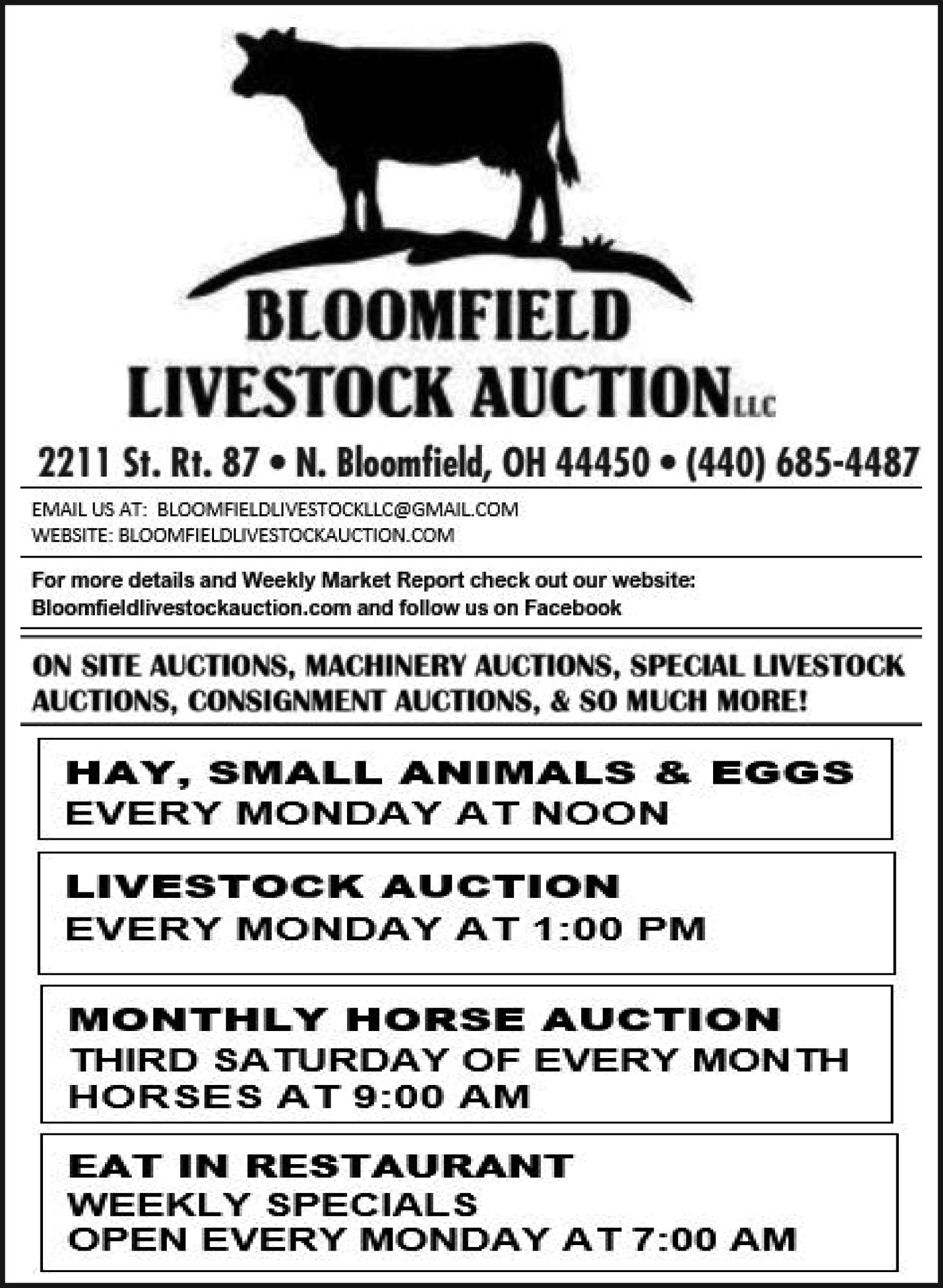
“I said, ‘I’m going to make me a bunch of live edge tables,’” he recalled.
Stoltzfus was born and raised in Geauga County. His parents, Emanuel and Mary Ann, relocated to Ohio from the Amish settlement in Gettysburg, Pa.
“Dad made furniture at home and sold it out of a shop,” he said, adding he learned his carpentry skills while helping out.
Stoltzfus built his immaculate shop/showroom a couple of years ago and wondered if he would be able to fill it.
“It seemed like a lot of space, but it’s not enough already,” he said.
A portable sawmill will produce plenty of slabs, but there are certain characteristics Stoltzfus looks for when choosing pieces for his tables and benches, he said.
Soft maple has a distinctive grain and sometimes that pattern makes it especially attractive as live edge furniture, he said, adding occasionally, he’ll find a piece of white oak that will serve his purposes, as well.
As Stoltzfus operates his sawmill, driven by a diesel John Deere engine, he keeps his eyes open for those slabs that can be repurposed.
Some of the trees may have grown oddly, been damaged while growing, or even started to decay, which can cause spalting, a bacteria-induced darkening in the grain, he said. One coffee table on display at Creative Edge Tables shows a slice of a sizeable irregularity in the wood.
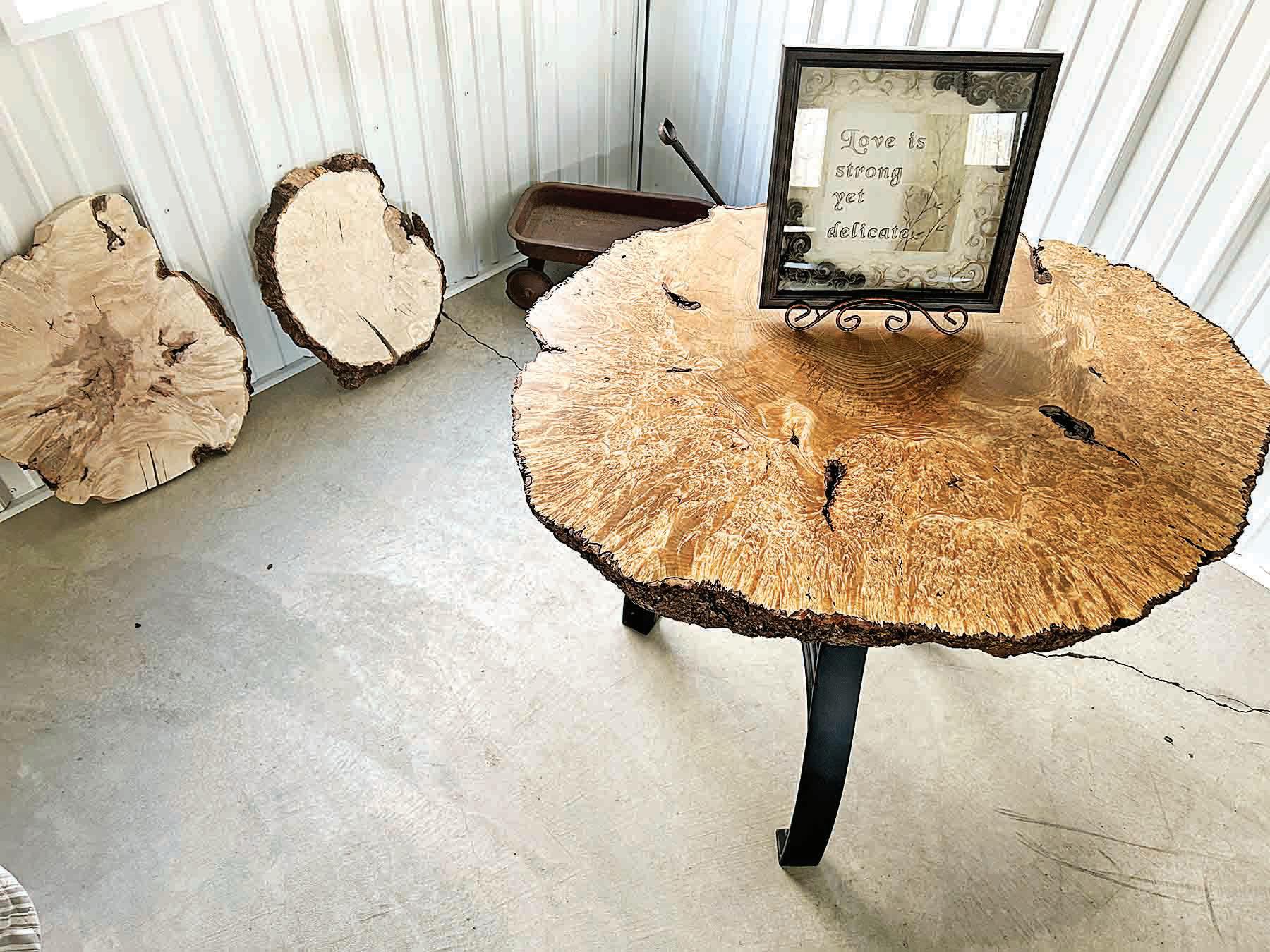
Stoltzfus also will take a cut across the trunk of a tree so the bark is all around the edge, making it useful for a side table.
Recently, he has expanded into kitchen tables with a butt cut off a log up to 42 inches in diameter, he said.
Turning a green slab into a work of art takes time. Stoltzfus said he gives his inventory eight or nine months to air dry, then three or four weeks in a kiln.
“Then, it’ll be ready to turn into furniture,” he said.
After cleaning the slab up, he fills cracks and crevices with translucent epoxy so the surface is smooth. If there is a gap all the way through the wood, which may happen if the plank has started to rot, Stoltzfus will fill it with the epoxy, making a kind of thick, milky window.
When making furniture to order, he can suspend items in the epoxy or add color to the finish, he said.
“Whatever the customer wants,” Stoltzfus said.
He pointed to a smooth-edged walnut slab from southern Ohio with a crack up the middle filled with pebbles and epoxy. It looks like a stream running through the table.
He displays several walnut pieces he purchased and is selling.
Using smaller slabs, Stoltzfus creates handcrafted charcuterie boards used as serving trays for special occasions.
He also uses smaller slabs to make childsized picnic tables and benches.
The shop and showroom are a sideline for Stoltzfus, but he said he plans to give up his sawmill and dedicate himself to more creative efforts.

ment LLC in Newbury Township has been hooking up Northeast Ohio residents with trailers of all kinds.


Droves of landscapers, contractors, farmers and all-terrain vehicle drivers find their way to O’Reilly Equipment on Ravenna Road for service, parts and new trailers.
Part of their inventory also fills up much of the 7-acre lot across Ravenna fronting on Kinsman Road — a display that catches the eye of many drivers who are waiting for the light at the intersection to change.
That visual can lead to sales and O’Reilly said they sell plenty of trailers and snowplows in an area of Geauga County that already seems well-supplied with trucks of all kinds.
“If you see a truck, you usually see a trailer behind it,” said Jeff O’Reilly, who co-owns the dealership with his brother, Paul O’Reilly.

When the pair started O’Reilly Equipment in 2002, they concentrated on selling and servicing trailers and snowplows in the region, but they had serious dreams and were willing to work to achieve them.
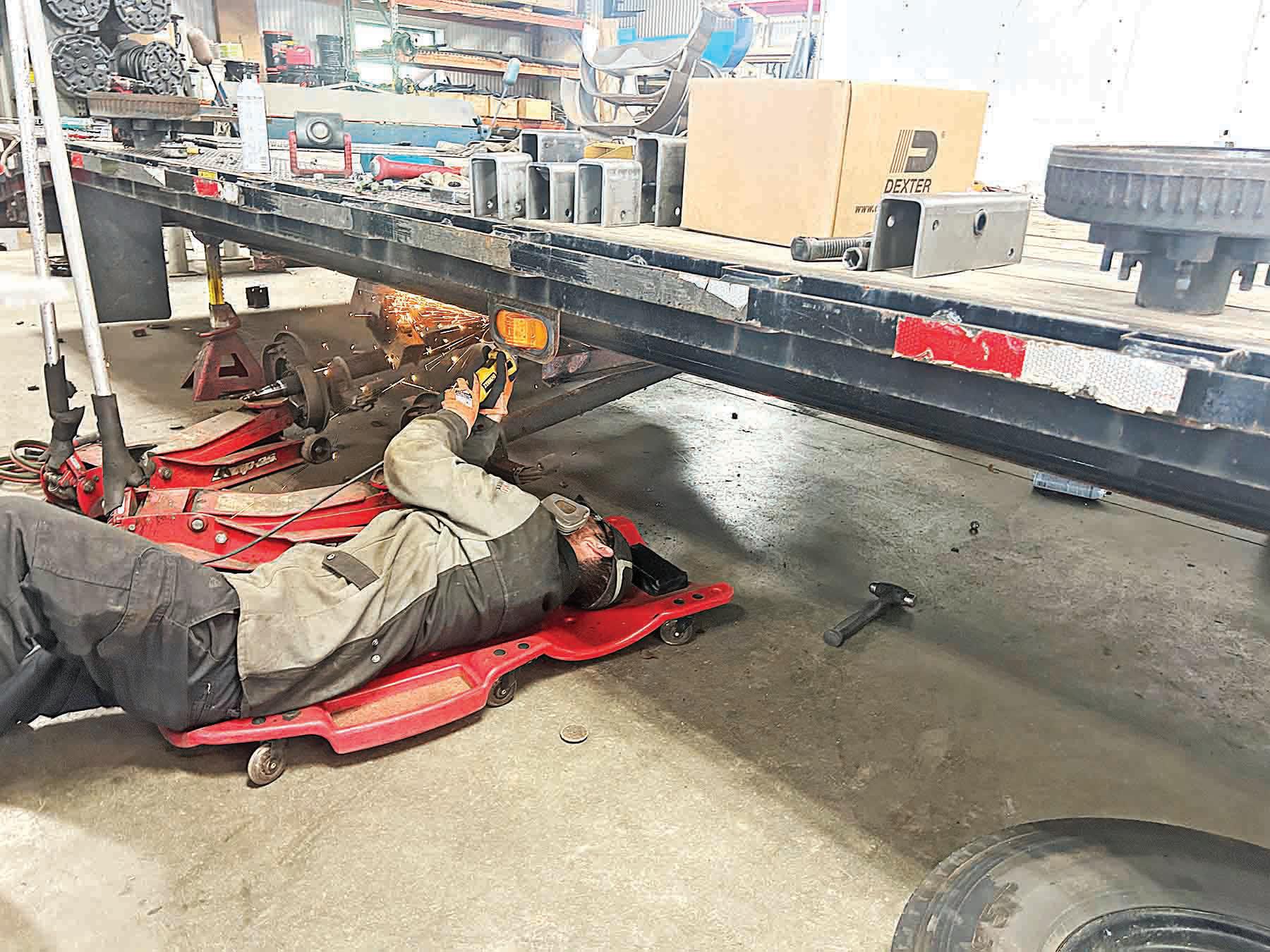
In 2004, they bought more than 3 acres at 14555 Ravenna Road, tore down the house and built the showroom and shop as the business headquarters.
The demand for trailers of every kind — utility, dump, enclosed, stock and flatbed equipment trailers — grew, then grew some more. They began adding vendors and employees to keep up and they aren’t done, yet.
“We’re looking to expand,” Jeff said.
Residents and landscapers looking for winter employment boosted O’Reilly Equip-
“But trailers are number one. We sell trailers all year around,” Jeff said, adding they have sold so many, “You’d figure everyone would have a trailer.”
Still, the market hasn’t faltered and trailers are needed for pleasure, as well as business. The demand is steady. Trailers break down and wear out, he said. If it can’t be repaired, it has to be replaced.

As a final-stage manufacturer, O’Reilly’s team spends a lot of time up-fitting light and medium service trucks, adding big delivery boxes, utility beds, dump beds and frames for hauling ladders, among other items.
“When a truck comes to us with a chassis, we build it,” Jeff said.
The operation’s expansion and popularity are due to their workforce and the team’s approach to their customers, he said.
“We have (employees) who are hard-working and down-to-Earth,” Jeff said.
A visit to the busy garage is witness to the staff’s work ethic, with repairs and up-fitting in process.
Jeff estimated half their sales are to customers in Northeast Ohio, but they will ship anywhere in the U.S. and beyond. That is part of their philosophy of pleasing their customers and one reason so many come back for new or replacement items.
“We take care of them. Everybody has a story and a need,” he said. “We try to treat people right.”
Their website, www.oreillyequipment. com, shows about 20 vendors who keep O’Reilly’s supplied with plows, trailers and up-fit parts.

 By aNN WishaRt aNN@kaRlovecmedia com
By aNN WishaRt aNN@kaRlovecmedia com
When Bill and Dawn Alvord first considered starting a business, they knew it could become a family affair.
Striking out on their own in 1993 took a leap of faith and family support, Dawn said.
It was not a decision made lightly.
“Our lives were going to change,” she said.
Bill had been working as a mechanic since he was 18 and Dawn had been staying home with the kids and working part time at Alvord’s Insurance.
They bought out Krantz and Sons’ TroyBilt dealership in Chardon and hired a couple of mechanics.
Although the dealership and their lives were changing, one thing did not.
“We kept the old phone number. It was the smartest thing we did,” Dawn said, laughing. Krantz customers would call for service or new equipment and pretty soon, they became Alvord customers.
“Bill’s very knowledgeable with service,” she said, adding that is one aspect of the business that keeps customers coming back over the years.
It wasn’t long before Alvord’s Yard & Garden Equipment LLC did become a family affair.

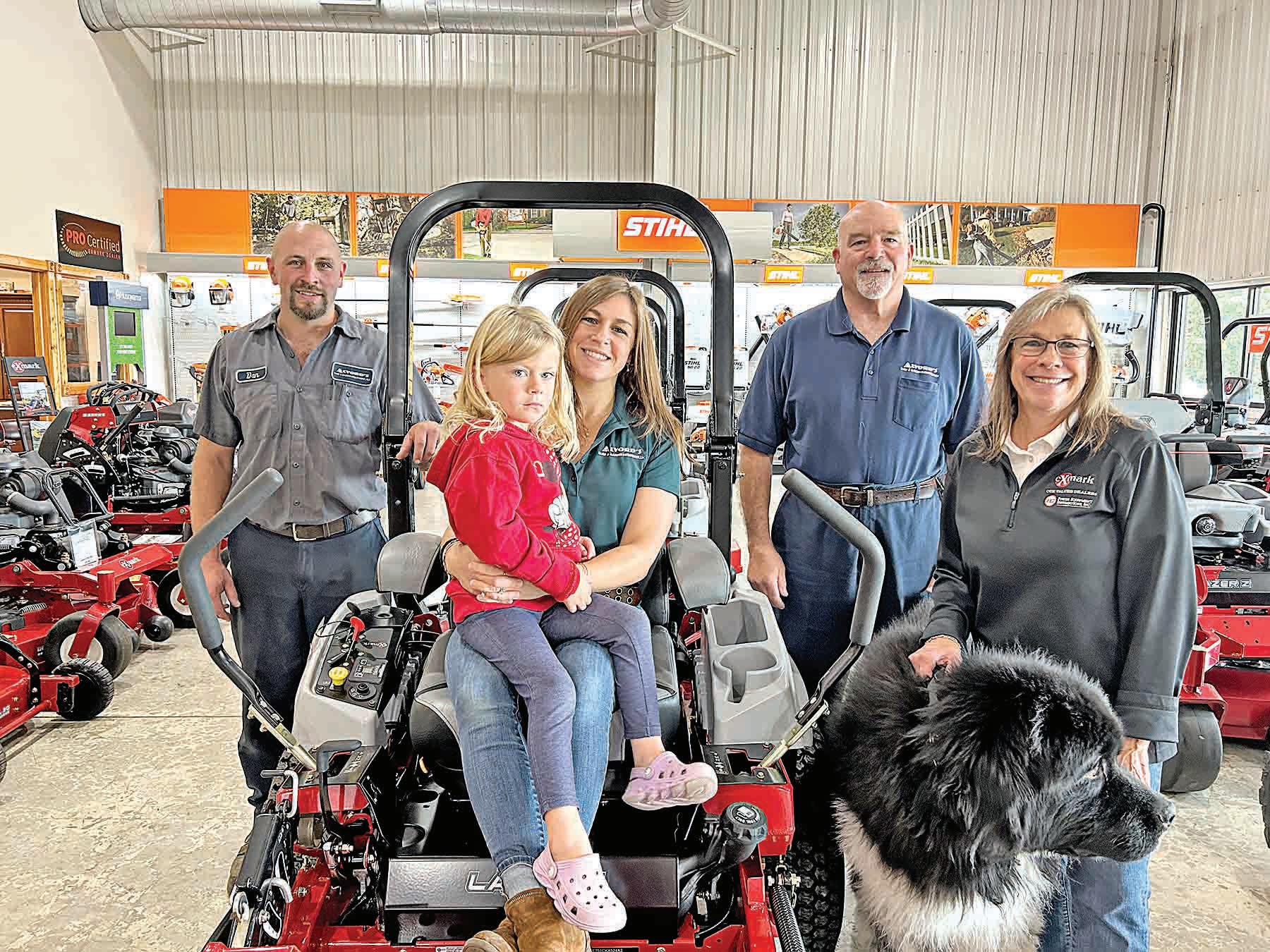
“The kids used to clean the equipment. My dad (Howard Richardson) was a runner. Bill’s dad (Jim Alvord) made deliveries,” she said. Julie was 6 and her brother, Dan, was 8 when Alvords opened the business.
Julie Thomas recalls her grandmother, Mary Lou Richardson, answering phones, Jeanette Alvord taking care of the bookkeeping and cousin Luke Chuha sharpening mower blades.
“When Grandpa Jim was done with insurance, he did sales,” she said.
Jim Alvord still comes in to tally the credit card slips, Dawn said.
“Everybody’s always willing to work,” she said.
There were benefits to the location that Julie remembers: the Green House Retreat in front of the dealership sold ice cream and had games to occupy the children when they
tired of cleaning equipment.
In 2004, Bill and Dawn took another leap of faith and bought 8 acres in Munson Township. They built a new facility at 12089 Ravenna Road just north of Mayfield Road to accommodate their inventory, as well as provide more space for maintenance and servicing customers’ lawn mowers, snow blowers and chainsaws.

The show room with rows of lawn tractors, weed whackers, leaf blowers and other equipment seems very full to the casual visitor, but Dawn appreciates the space.
“Our whole building (in Chardon) was the size of this showroom,” she said.
There is also plenty of room for George, their huge, shaggy Newfoundland to roam behind the counter with Julie’s daughter, Brooke, 3.
“People come in just to see George,” Julie said.
On a quiet day, visitors will park on the high stools at the counter and chat for a while in the family-friendly atmosphere, she said, adding they may also take time to admire the well-stocked showroom.
Currently Alvord’s sells eXmark, Stihl, Husquavarna, Billy Goat, Toro and BCS brands, according to their website www.aygoh.com.
Now summer has arrived, demand for service is strong, Bill said.
“Right now, we are big with landscapers. Our business is about 50/50 commercial/residential,” he said, adding this includes county and municipal facilities and various park districts.
Customers from surrounding counties make the trip for parts, service and replacements, he said
With the Great Geauga County Fair around the corner, plans are being made for the Alvord display that always draws a lot of visitors, Bill said.
“Initially, we did the fair and home and garden shows for years,” he said.
In the early years, the Alvords promoted the business on the road. They displayed at the Cleveland Home and Garden Show for several years and participated in the Cleveland Botanical Gardens event Floralscape in
On Sunday, Sept. 3, runners will gather for the fifth annual Great Geauga County Fair 4-H 5K and Fun Run. Running on a picturesque route through Ohio’s oldest continuous county fair, this year’s runners will be helping to support the yearly operations of four 4-H clubs in the county, including Geauga Engineering And Robotics, Plantmasters, Breeders & Feeders and Geauga Caprine Kids.
For more than a century, 4-H has trained the leaders of tomorrow by encouraging experiential learning, community service, and leadership skills. Under the United States Department of Agriculture’s National Institute of Food and Agriculture and in partnership with 100 public universities, 4-H reaches more than 6 million children across the country and seeks to live up to its motto of “To make the best better.”
Members of 4-H clubs complete hands-on projects in areas like health, science, agriculture and civic engagement in a positive and nurturing environment, receiving guidance from adult mentors.
Funding the diverse projects in the participating 4-H clubs is expensive and challenging, especially with the state-of-the-art technology required for robotics.
“We have depended on funds from the 5K to pay for all the new equipment we need to buy each year for the regular robotics curriculum,” said Jeff La Favre, advisor for GEAR. “My favorite memories all revolve around the sense of pride and satisfaction I see expressed by GEAR members as they successfully complete their projects.”
Projects which are part of the GEAR curriculum include building robots to follow lines and stop when there is an obstacle, a radio and amplifier. Members also learn to
from page 10
the 1990s, he said.
“We needed to get our name out,” Dawn said, adding the effort drew in lots of homeowners. Now, they focus on the fair.
“Dad loves the fair,” Julie said.
“We do the fair now and are in the (Geauga County) Maple Festival Parade every year,” he added.


These are important events where they can draw in new customers and visit with old friends.
Bill, Dawn, Julie, Dan and five other fulltime employees keep the operation rolling through every season. Julie said there are three grandchildren — Brooke and Hunter, 2, and Dan’s daughter, Cheyenne, 16, — who might be interested in the family business in the future.
After graduating from Kent State University with a degree in business, Julie said she took over the finances so her grandmother could retire. As general supervisor, Dan manages the back shop and service while Bill and Dawn do sales, parts and whatever else is needed.
The family has been through the ups and downs of the economy like the Recession that started in 2008 and the COVID-19 pandemic, when a lot of business was done in the Alvord’s parking lot. Between market fluctuations and personal losses, they have found support through the business, Julie said.
program robots including the Edison robot used by fifth graders and more sophisticated robots used by older members.
GEAR members go on to develop their own special projects. This year’s member projects included a device to repel deer from gardens. The funds provided through the 5K race provide the main source of funding for these projects.
Aidan Dondero, recent graduate from West Geauga High School and a member of GEAR since 4th grade, said GEAR 4-H advisors, Mr. and Mrs. La Favre, have had a huge impact on his life through their generosity and support over the years.
“The La Favres, friends that I have made through 4-H, and extensive knowledge that I have gained, have helped to shape me into the person that I am today,” Dondero said.
Grant Congdon, another recent graduate, echoed Aidan’s thoughts, adding as a GEAR member for many years, he has not found another group that has provided the support, encouragement, or generosity that he experienced through his time in 4-H.
“All of the projects, meetings, and volunteer events have prepared me for whatever I choose to pursue,” Congdon said. “There are so many things I picked up from problem solving to creative thinking that you rarely experience anywhere else. I couldn’t have ever imagined what I would learn to do while I was in 4-H. All of the advisors, especially the head advisors, are the most generous and kind people I have ever met. On top of all that, the collaborative environment is unmatched and my memory of working on projects with my friends will never fade. I could not encourage others enough to participate in a group like GEAR 4-H Club.”
Geauga County has 4-H clubs for horses, cattle, sheep, goats, pigs, chickens, rabbits, dogs,
“Our customers helped us work through it. You can’t let grief just shut the business down,” she said.
The enterprise has witnessed three generations of Alvords behind the counter and in the shop, and Julie is confident it will continue serving the community.
“Dan and I love what we do,” she said.
plant agriculture, sewing, cooking, plants, archery, crafting, scrapbooking, genealogy, and robotics.

Members compete at the county and state fairs for awards for excellence. Some 4-H members also compete in local and state science and engineering fairs.
Clubs teach 4-H participants to be caring and compassionate members of the community and train the leaders of tomorrow. Some of the funds from 5K run held 2022 were used by the to provide meals and some gifts to families in need at Thanksgiving and Christmas, said Jim Toth, leader of Geauga Caprine Kids.
Karen Teichman, who has been an advisor for Breeders & Feeders for 45 years, highlighted the civic-mindedness of 4-H club members.
“We used some of the funds to give back to the community to Rescue Village, Veterans, Red Tulip and Geauga Hunger Task Force,” she said.
Funds from the 5K have also sponsored 4-H clubs to understand Northeast Ohio plants and the environment.
“We recently went to the Oak Clearings, a savanna-type ecosystem in northwestern Ohio with the only Ohio native cactus,” said Adrienne La Favre, Plantmasters’ advisor. “This year we continued our study of phenology, a special way to see the environment. Also, Colleen Sharp of Geauga County Soil and Water showed members how to study the health of a stream. We are committed to learning as much as we can about our natural world and how to care for it.”
“The advisers and members of the 4-H clubs involved in the 5K race are grateful for the many sponsors from the community who have supported the race this year and in years
past, especially the Geauga County Fair Board of the Geauga County Agricultural Society. The fair board has supported the race since its inception. This race could not happen without the generous support of the Geauga County Agricultural Society (Geauga Fair Board)” said Bill Patterson, who serves as an adult adviser with GEAR. “The support of each one of you is appreciated, and we strive to provide an event that is worthy of being connected to The Great Geauga County Fair.”
Registration for the Fun Run is still open at www.geaugafair.com/daily-schedule.html.



Five generations of farmers have worked on Burton “Bud” and Alice Armstrong’s Ma ple Highlands Farm in East Claridon Town ship.
The Armstrongs’ daughter — Dawn Far rell — is one of three daughters who lives next door and said the family is proud of the name they carry, which has been associated for generations with making maple syrup and being in agriculture.
“The farm originally was 145 acres, but was split between the Armstrong brothers. Currently, the farm sits on 96 acres and has been in operation since 1833 and is approach ing its 200-year mark,” Farrell said.
On Oct. 21, 2019, the Armstrong’s farm became the 16th Ohio Historical Family Farm in Geauga County.
The process to become an Ohio Historical Family Farm begins in the Geauga County Recorder’s Office.
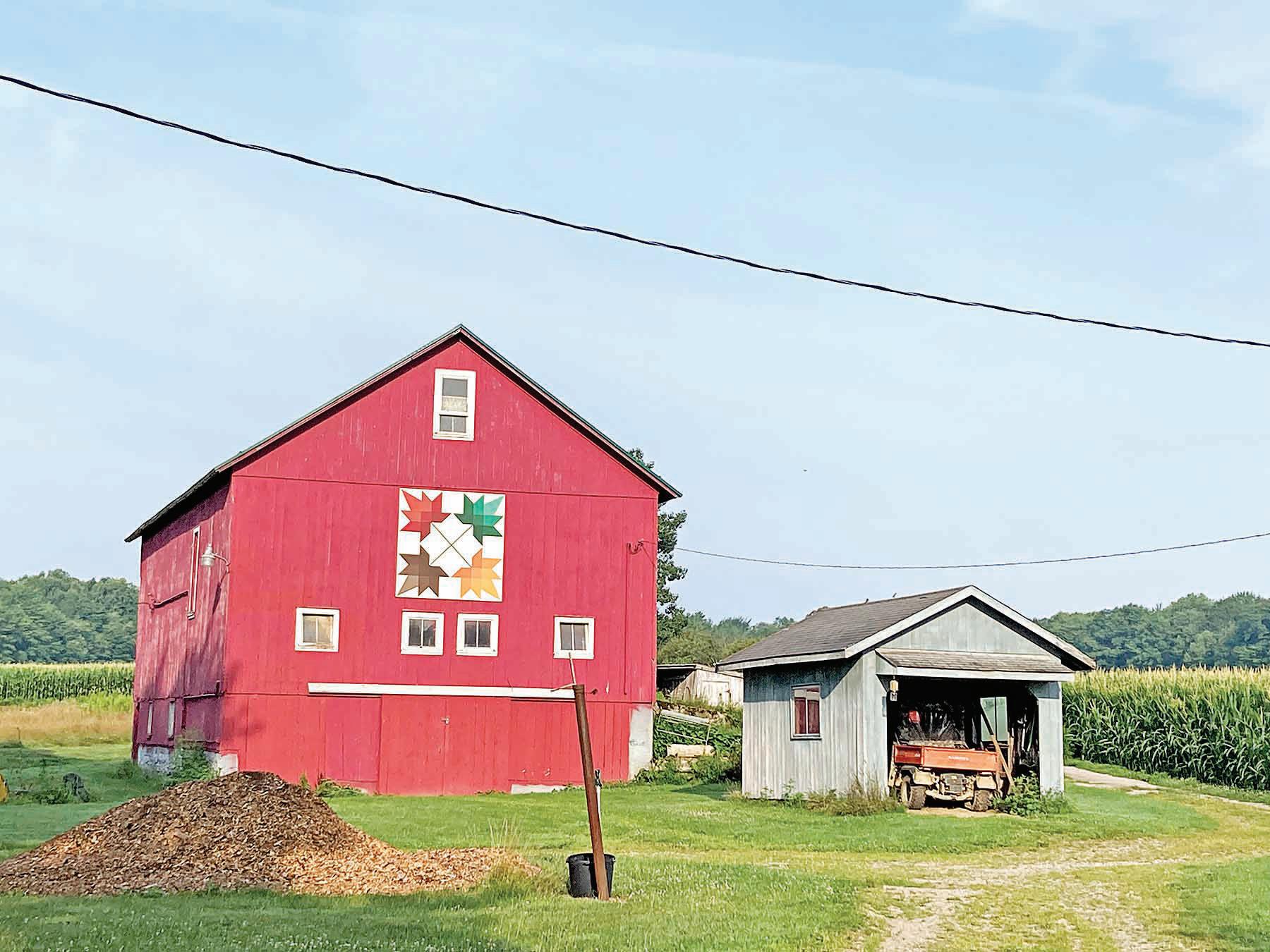
In order to qualify for such an honor, a farm must be in the same family for at least 100 years and still being used for agricultural purposes, according to the GCRO.
Farrell said Burton didn’t necessarily think there was anything hard about working the land.
“He just knew that the work needed to be done and went at it with a cheerful attitude. The most satisfying part was having a successful crop year and seeing the bounty of what they harvested available to sell,” Farrell said. “Years ago, when they used buckets and before pipeline became available, the
Armstrong daughters helped collect the sap, along with some young men Mr. Armstrong brought home from his work.”
Farrell said Burton always seemed to make what he needed due to a combination of syrup and whatever other crops were growing on the land.
Burton’s great, great, great, great-grandfather, Hiel Armstrong, purchased 100 acres in Claridon Township on June 8 of 1833. Hiel and his family came from Franklin, Conn., and operated a grist and a sawmill. Family ancestor Burton D. Armstrong served as a trustee for Claridon Township and enlisted in the Civil War, Farrell said.
“His name is carved on the building in Claridon’s cemetery behind town hall. He also was an attorney and wrote a letter to
raise a regiment from Claridon for the Civil War,” she said, adding Burton D. was injured during the war and also lost his voice.
“We have a copy of the letter, which is on file with the Daughters of the American Revolution,” she said.
The family farm then transferred to Burton’s son, Ashley, who was involved in cheese making. After that, it passed onto George Armstrong in 1914, who was recognized as one of the leading growers of potatoes in East Claridon, selling them to the Dan-Dee Potato Chip Company, Farrell said.
“This farming family has raised dairy, made cheese, maple syrup, corn, soybeans, melons and even harvested timber for sale,” she said.
In 1956, Burton E. Armstrong Sr. took
over the farm and continued to grow potatoes, adding maple syrup to the mix. He was inducted into the Maple Syrup Hall of Fame in 2001.
Through the years, the farm was successful, even gaining recognition from U.S. Rep. William Stanton, who enjoyed their maple syrup so much, he had a gallon of it sent to President Lyndon B. Johnson in 1966, Farrell
Early on, all work on the farm was done with horses and manpower.
“Over time, that has changed drastically as there have been advancements in machinery and equipment for making maple syrup. The gathering system has also changed from buckets to pipelines,” Farrell said. “Though this has made things more convenient, it has taken a lot of the manual labor out of farming, which was a very enjoyable part. From this standpoint, things could be viewed as easier or harder depending upon how you look at it.”
Farrell explained how a typical day on the farm started and ended for the family.
“They would start their day typically at 8 a.m. and run until 11 p.m. to midnight,” she said. “However, this was entirely dependent upon the season and what they were growing.”
The farm has won awards six times at the Geauga County Maple Festival in Chardon for being a top syrup producer in the county.
“Currently, the farm is growing corn and soybeans and has 2,000 taps in their hearty maple trees,” she said.
When it comes to advice for anyone interested in getting into farming, Farrell said, “If you like the open air and being outside, this is definitely a lifestyle that fits it.”
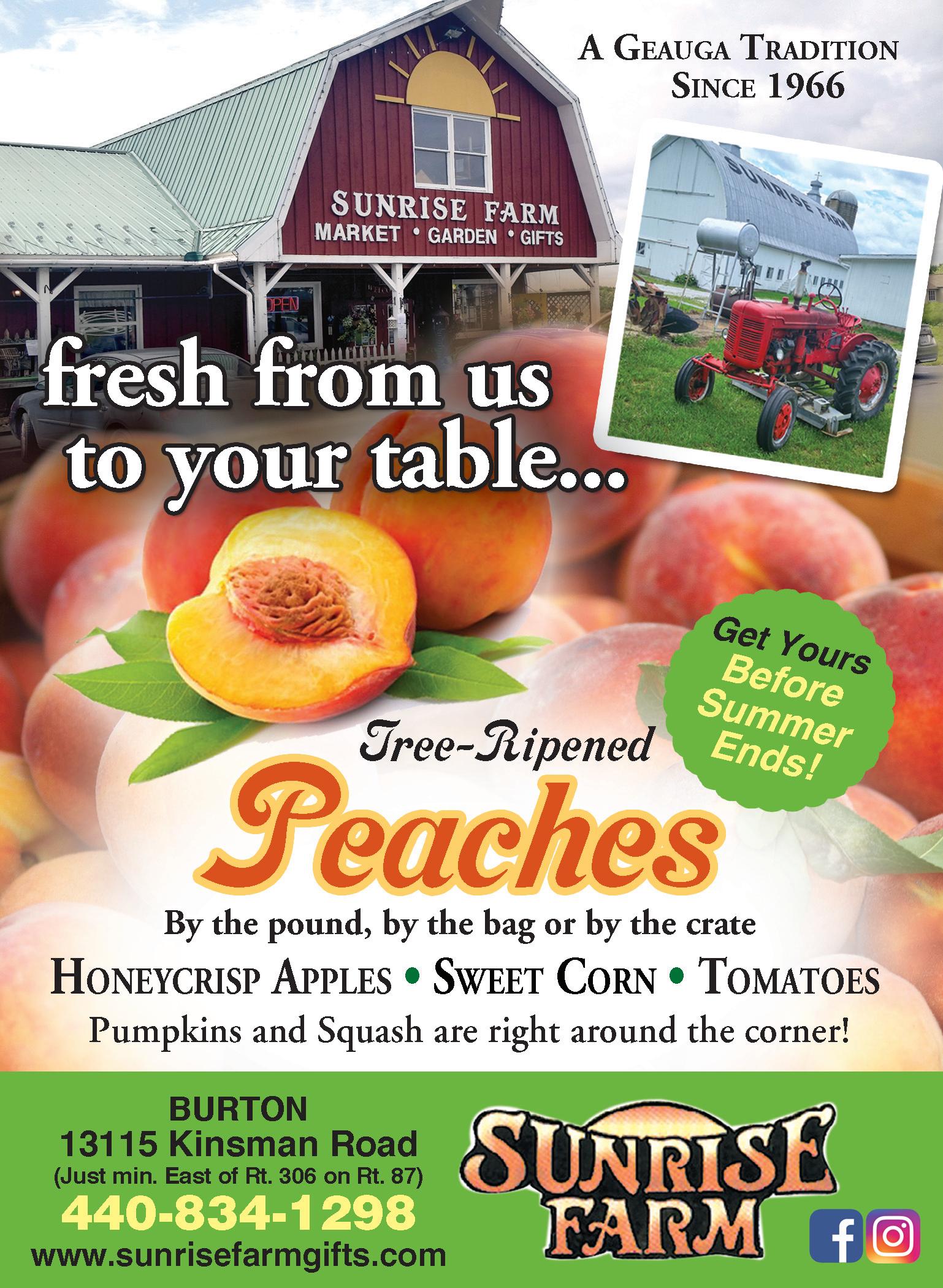


Travel to the farthest-back region of the Geauga County Fairgrounds and you’ll find Geauga Park District’s building, always a showcase for the majestic, amazing Monarch Butterfly.
Have you been back there recently? Or maybe you’ve never been? Be sure to stop this year to glimpse many tiny lives as they finish their incredible transformation and prepare to depart for Mexico!
You’ll find us in the Natural Resource Area, open Friday through Sunday 11 a.m. till 7 p.m. Friday through Sunday and till 6 p.m. Monday. For a more in-depth experience, you can ever time your visit for our daily 3 p.m. naturalist-led program and Monarch tagging.
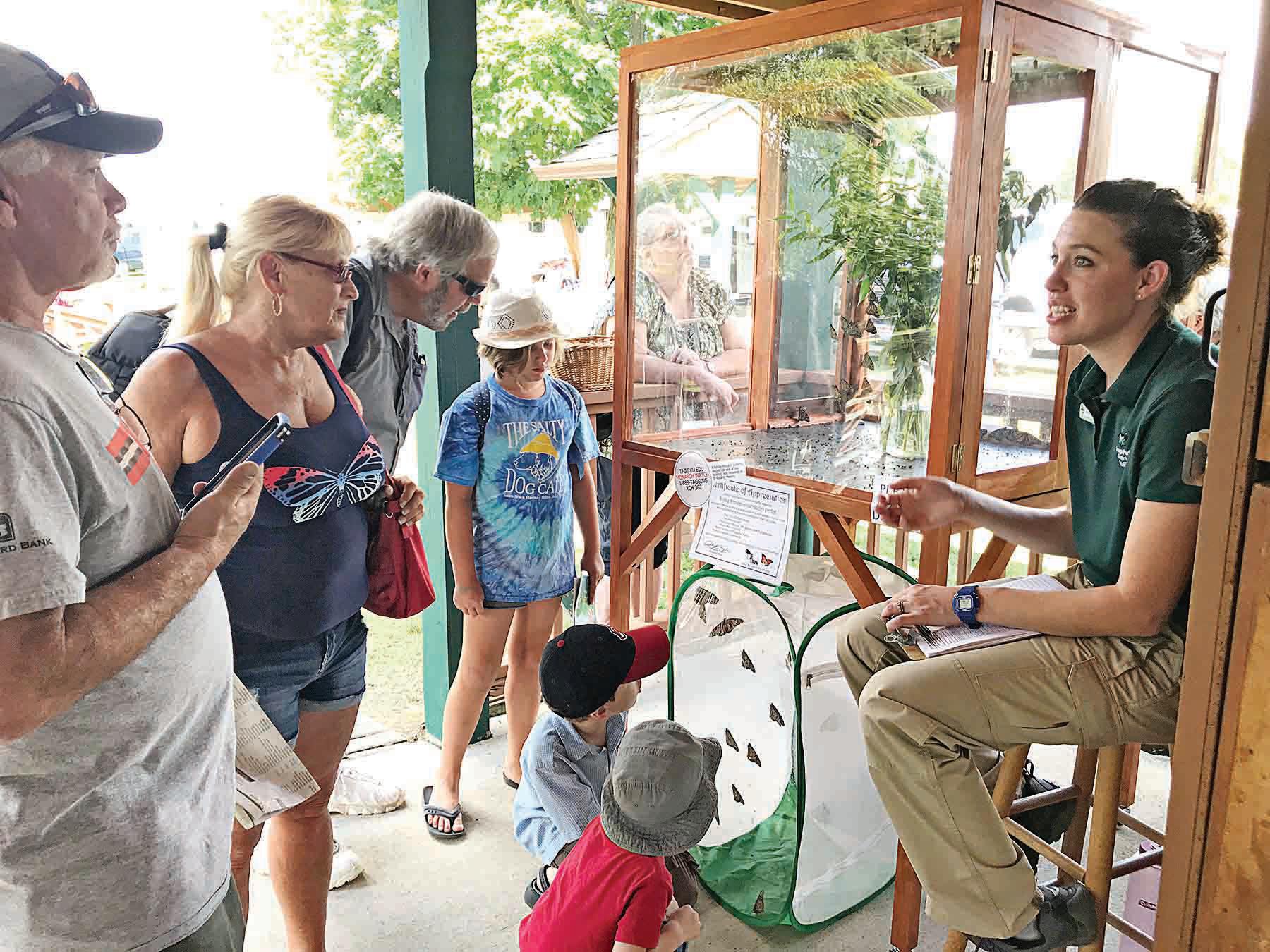
Why the Monarch butterfly? Here’s an inspiring refresher about just how special they are.
This species’ spring/summer generations, up to three in total, have a lifespan of 2-5 weeks. But its fourth generation, hatched in August, overwinters in Mexico and lives 6-8 months! It hatches here, travels to Mexico for the winter, overwinters, mates there, and then flies back to the southwest U.S. to lay eggs to repeat the whole cycle before its life is done.
Monarch larvae (caterpillars) eat ONLY
milkweed leaves. That’s because the milkweed plant is poisonous, so when the larvae ingest it, they inherit defensive superpowers, becoming poisonous to predators.
Monarch Butterflies play a vital role in our ecosystem as pollinators, but that precious, poisonous milkweed they need has become much scarcer. With a population decline upwards of 90 percent in recent decades, Monarchs were finally classified as endangered species in July 2022. Biofuel production has skyrocketed, and corn and soybean seeds are genetically modified to tolerate herbicides, but milkweed can’t compete. Also, roadsides have seen more aggressive mowing and herbicides, and our country develops a million more acres each year.
In its annual count this past Thanksgiving, the Xerces Society for Invertebrate Conservation tallied a total of 335,479 overwintering Monarchs, an increase of 88,242 from the previous year. Public awareness campaigns are starting to help. But our work here is clearly not done. If you have a yard, make a plan to snag some milkweed from your local native plant greenhouse, or Geauga Park District’s annual Earth Day giveaway, and plant it. Not only will it help these the Monarchs and other pollinators, but you’ll have beautiful purplish-pink flowers in a few years – plus, spreading milkweed offshoots to “spread the love” to appreciative family and friends.
COURTESY OF GEAUGA COUNTY FAIR WEBSITE



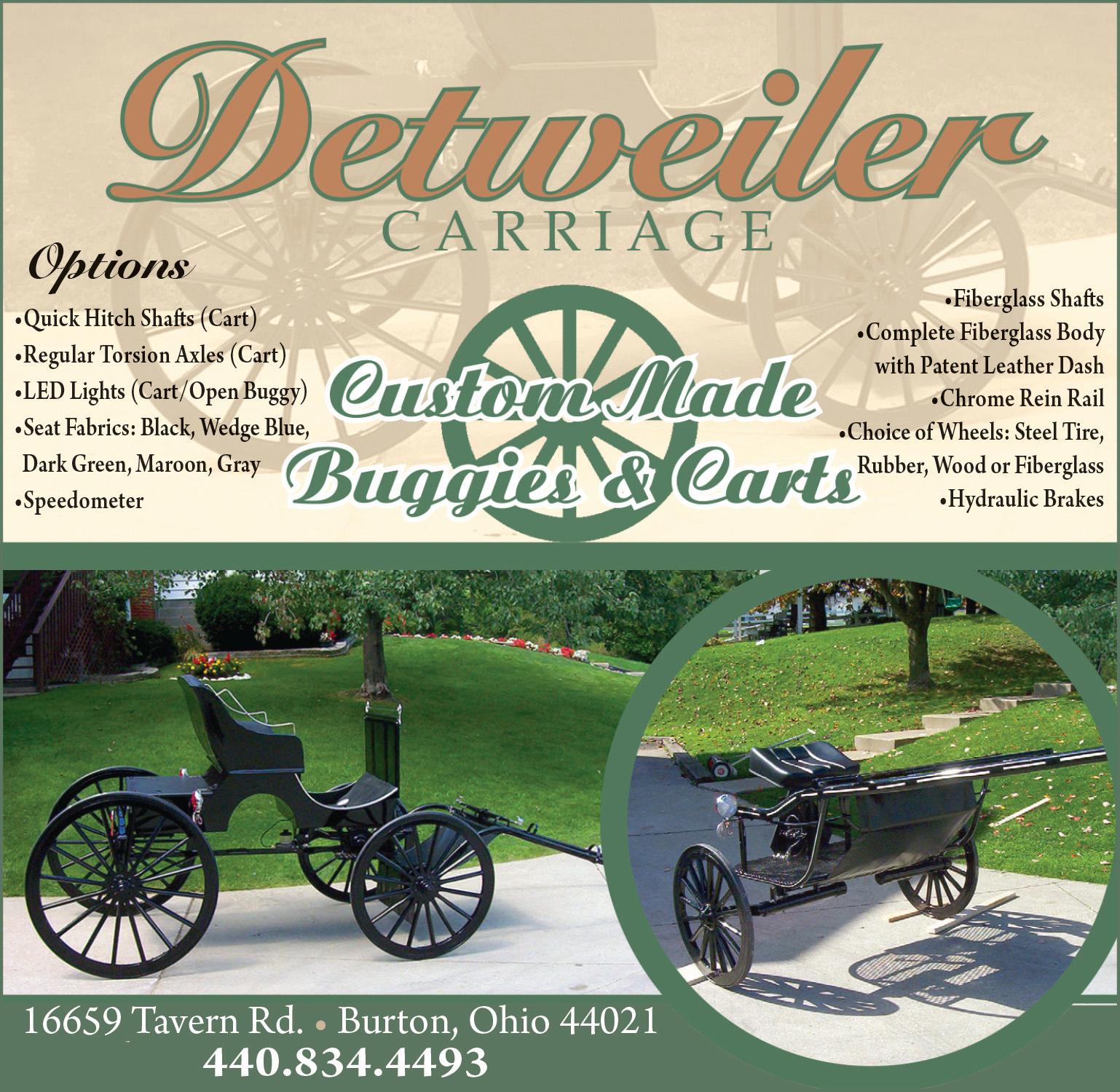
The Geauga County Junior Fairboard is made up of representatives from seven different youth organizations from across the county including: 4-H, Farm Bureau, GHPA, Boy Scouts, Girl Scouts and Grange. Together, they plan and organize the Junior Fair portion of the Great Geauga County Fair. Members include: Morgan Alloway, Hannah Benesh, Addison Bezdek, Addison Burnett, Chance Corey, Jacob Grinstead, Emma Gromofsky, Addison Heilman, Campbell Hoar, Ava Intellisano, Erin Keener, Danielle Lane, Kaitlyn Lane, Emilia Larkins, Aaron Lesner, Jessica Lesner, Audrey Morgan-Ard, Aravis Nelson, Rachel O’Reilly, Tatumn Poff, Taylor Poff, Jacob Shively, Avery Taylor, Brooke Taylor, Grace Toth, James Toth, Lilyan Warner, Teddy Welsh and Allie Wiseman.
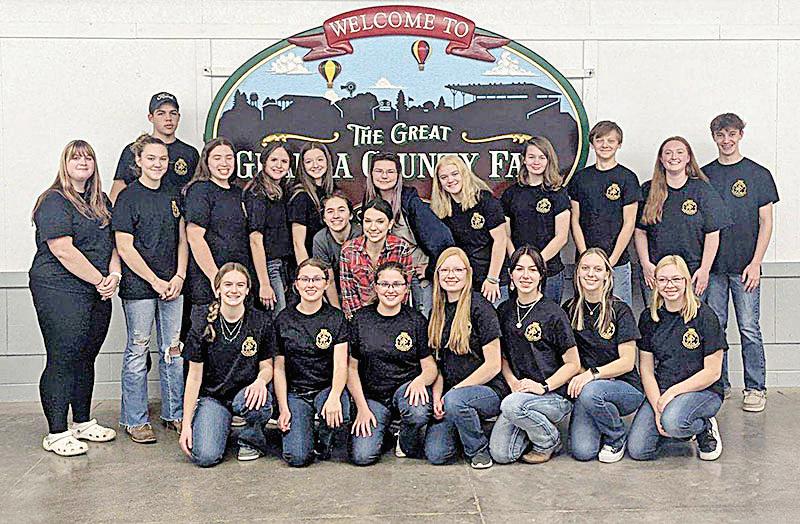
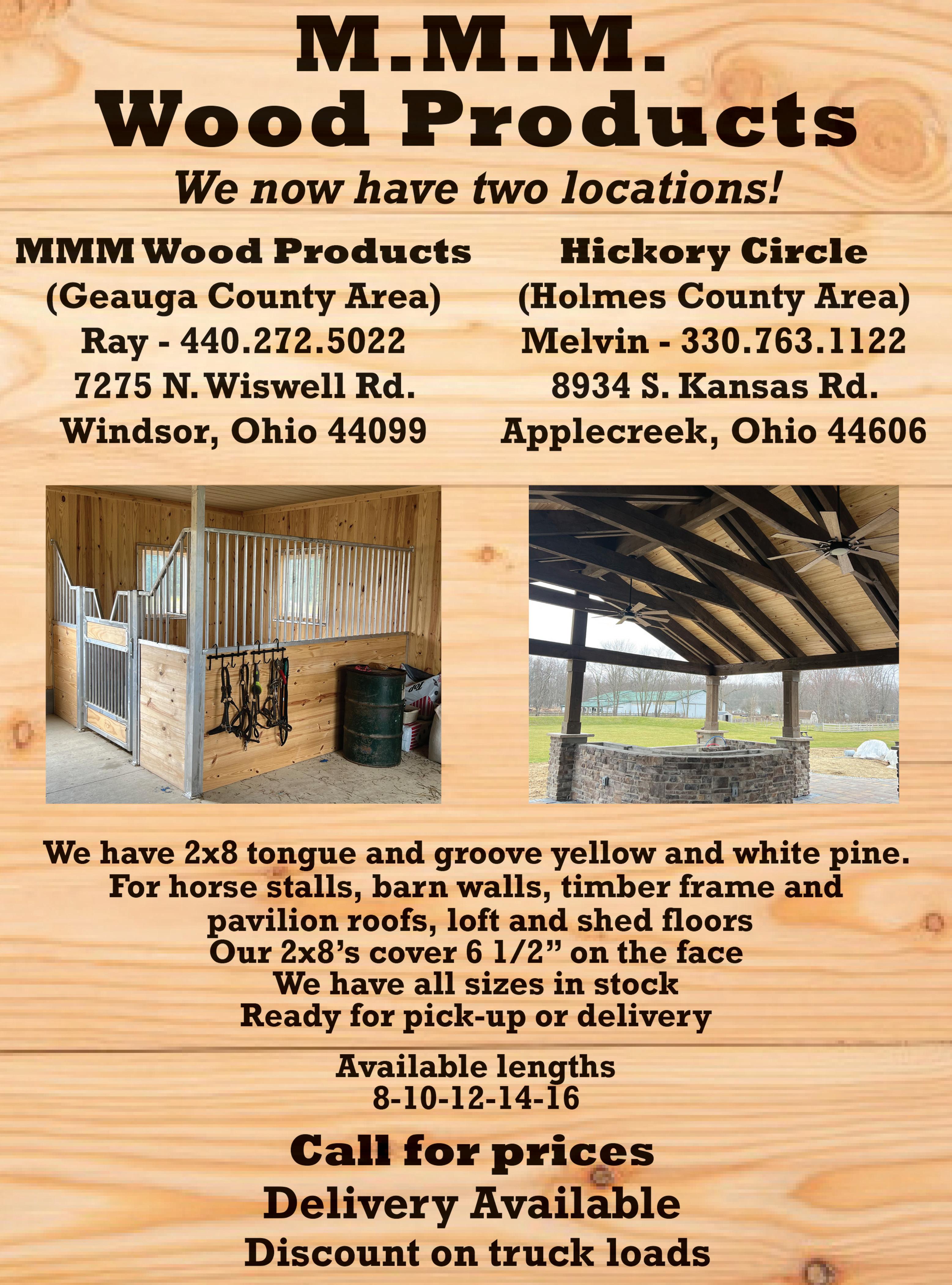

When Brittany Adams entered her pie in the 2022 Great Geauga County Fair, she had no idea she was going to secure the win for her age group.
She plans to compete again this year and is aiming for an even higher title.
Meanwhile, Carolyn Schue — who has won for her age group around 12 times and achieved Grand Champion thrice — plans to return and reclaim her crown.
For years, bakers across Geauga County have competed for the coveted win of Grand Champion in the fair’s apple pie baking contest.
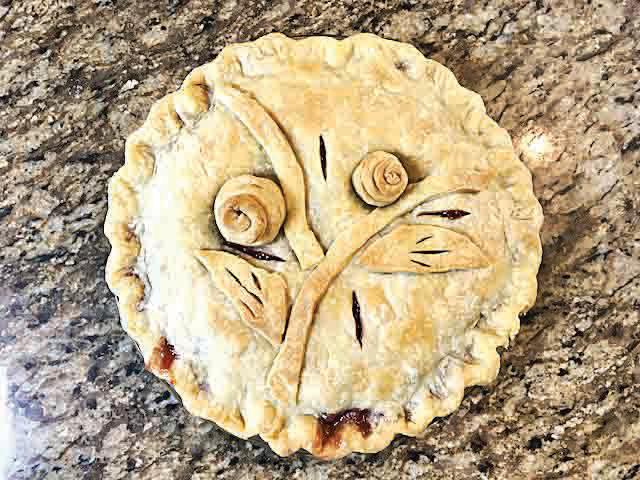
The competition is divided into three age brackets — Class One for ages 24 and under; Class Two for ages 25 to 50; and Class Three for ages 51 and over.
A winner is declared for each age bracket and the three winning pies are judged against each other, with the top one being declared Grand Champion.
The pies are then auctioned off — the money going to the fair auxiliary, which uses it for maintenance of the fairgrounds.

Schue recalled a previous pie being auctioned off for $1,000.
“I think a business bought it because I just couldn’t even imagine an individual paying $1,000 for eight pieces of pie,” she said.

Adams’ Class One win last year was bittersweet, as she entered using a recipe from her grandmother who had passed away shortly before the fair.
“I was in nursing school at the time I had to enter my pie,” Adams recalled. “So, my mom brought my pie in, entered it for me and then she called me as soon as my class ended and was like, ‘You need to get to the fair right now, you won first place,’ and anyone in my nursing class will tell you, I almost dropped to the floor. I started crying.”
Adams’ grandmother was a large influence on her baking throughout her life, and she especially enjoyed apple pie.
“She loved her pie. She would make pie every single month. And she would be like, ‘Brittany, you need to come try this one.’ And I’m like, Granny, it’s probably the same as last month and she’s like, ‘No, this one’s better. I got different apples!’” Adams reminisced.
Schue ascribes her start in baking to her parent’s apple trees.
“My parents owned 500 apple trees. So, it was just a continuation of that,” she said.
“How can you not make apple pie?”
Adams uses Honeycrisp apples in her pie due to their natural sweetness.
“It’s kind of just a preference thing,” Adams said when asked what apple was best for pie.
Schue uses three different varieties in her pie. Two of them may change from pie to pie, but she always makes sure to use a Golden Delicious, which is very soft when it cooks down.
“If you’ve got three different apples, that Golden Delicious is gonna get in between all the other apples. It’s gonna fill up the nooks and crannies,” she said.
A good pie is defined by its crust, Adams said, adding it’s important to get the crust recipe “just right.”
“Cause if you don’t get it right, it burns, or sometimes, it doesn’t cook evenly and so when you cut into the pie, the middle could be completely raw and the outside could be burnt,” she said. “It’s all about getting the crust right.”
Honoring her grandma, Adams chose not to divulge her secrets for the perfect crust.
“I think my grandmother would come and haunt me,” she said.
When asked about her tips and tricks, Schue said she’s always careful about not overhandling the dough, as well as the amount of water added. She attributes her many wins to her pie’s crust.
“Whenever I bake a pie for somebody else, that’s the first thing they say, ‘Oh this crust, it’s so flaky,’ or it’s so whatever,” she said. “So, I think it’s the crust that everybody’s looking for when they have pie.”
Adams test-baked her pie two or three
See Pie • Page 19
Pie from page 18
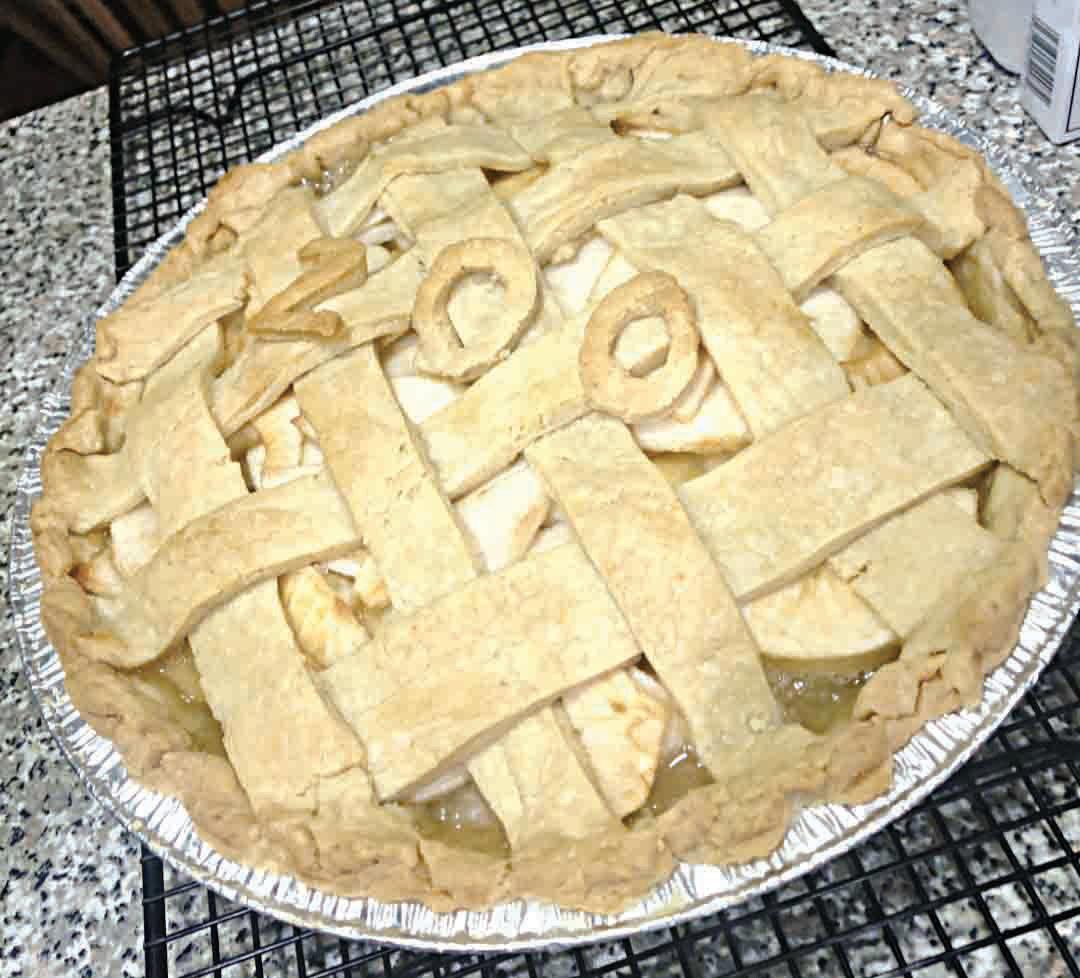
times before last year’s fair and found she had to adjust for both baking time and sweetness. She will be entering the same recipe this year with small tweaks made to it.
“Last year, I thought it was pretty good. I might fix the crust a little bit — my secret ingredient, I might put a little bit less of that just to see if the crust still bakes nice,” she said. “I’ll figure it out as I go along.”
Adams, who plans to do test-baking again this year, recommends the same to others who are entering the contest for the first time.
“Test it out beforehand,” she said. “Some people get this recipe in mind, they think it’s gonna be perfect and then maybe their oven is just slightly different than the person who made the recipe in the first place and they burn the crust, or maybe it’s not exactly what they would want, maybe they used a different kind of apple.”
She emphasized the importance of a baker making tweaks to the recipe to suit their own tastes.
While Schue does not do test bakes, she does consider what she may need to tweak every time she bakes a pie throughout the year, and also has her own trick to win — she makes two pies every year. One goes to the fair and one stays home for her and her husband to judge.
“Every single time, I make two. And I hope that it’s a hard decision, which one should I take,” Schue said.
Her advice to new entrees is to be thorough.
“Thoroughness in baking is probably the most important thing,” she said. “If it’s not thoroughly cooked or properly cooked, they won’t even judge it.”
As the judges change every year, it is near impossible for bakers to cater to them. Rather, they must bake the pie they believe is best and hope it suits the judges’ taste.
“Does your judge like a sweet pie, or a tart pie, or this apple, or that apple, you don’t know what that particular judge is looking for,” Schue said.
Deb Armbruster, who served as a judge
in 2019, had very little pie-tasting experience at the time, but remembers judging around 50 pies.
“We did a visual inspection, checked the flakiness of the crust, cut a small sliver and did taste,” Armbruster recalled.
Pies were given either a ‘yes’ or a ‘no.’ The yes pies were then pitted against each other until three remained for each age group.
“They were amazing,” Armbruster said. “And you definitely can tell the difference in one pie to the other, and I didn’t think I would be able to do that. Especially since I am not an apple pie eater. But after that judging, I am now an apple pie eater.”
Armbruster noted most judges preferred a warm pie, a feat difficult to accomplish in the competition.
“I know people who were taking it (their pie) right from the oven to the judging table,” she said, adding she would return to be a judge again in a heartbeat if given the chance, and her husband wants a go at it, as well.

440-729-7667






